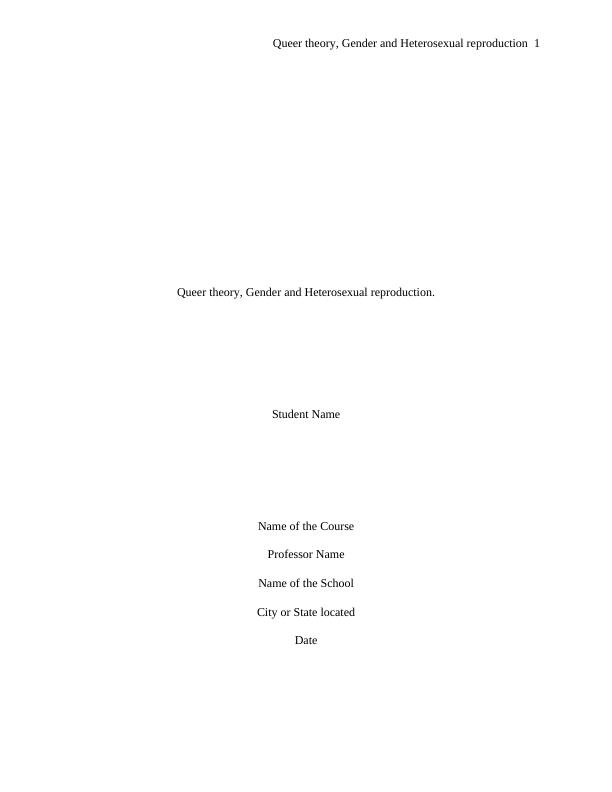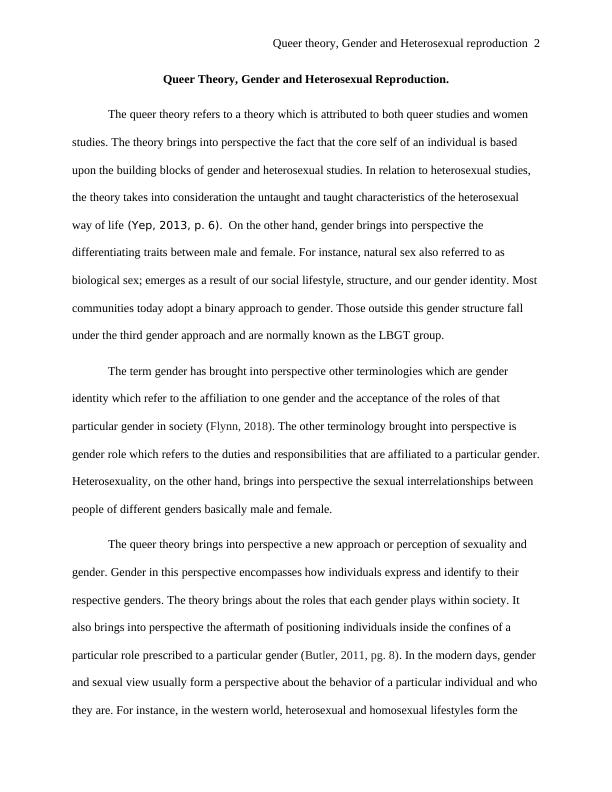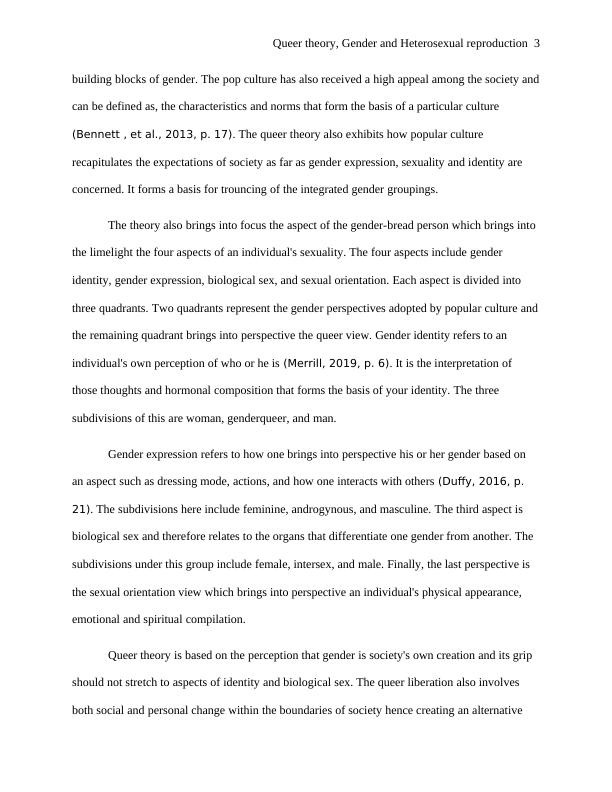Queer Theory, Gender and Heterosexual Reproduction
Write a 1500-word research-based analytical essay on a chosen essay question, using required readings from the unit and additional academic sources.
8 Pages2144 Words453 Views
Added on 2022-11-17
About This Document
This article discusses Queer Theory, Gender and Heterosexual Reproduction. It explains the queer theory and its relation to gender and heterosexual studies. It also brings into perspective the differentiating traits between male and female. The article also discusses the concept of society's own creation as a generic viewpoint and the cross-cultural analysis.
Queer Theory, Gender and Heterosexual Reproduction
Write a 1500-word research-based analytical essay on a chosen essay question, using required readings from the unit and additional academic sources.
Added on 2022-11-17
ShareRelated Documents
End of preview
Want to access all the pages? Upload your documents or become a member.
Understanding Human Sexuality through the Genderbread Model
|8
|1835
|118
Equality in Sports: A Transgender Perspective Discussion 2022
|11
|2571
|25
Sociological Imagination: Gender, Sexuality, and Social Inequality
|7
|1769
|396
The Relationship between Gender and Sexuality: Impact of Gender Norms on Sexual Practices and Intimate Relationships
|11
|3091
|63
Assignment on Sexual Self
|9
|3582
|236
Gender Biasness in Society
|5
|973
|70



